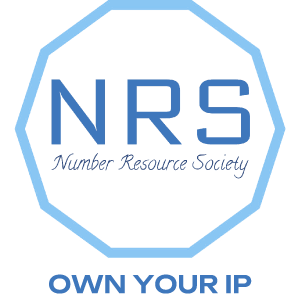The American Registry for Internet Numbers (ARIN)
serves as the Regional Internet Registry (RIR) for the United States, Canada, and several Caribbean islands. ARIN is responsible for the allocation and management of IP addresses and Autonomous System Numbers (ASNs) within these regions.
If you organization is based in ARIN’s region of responsibility, acquiring an ARIN IP address is essential to a secure and stable Internet.
How ARIN Manages IP Assets
ARIN plays a crucial role in the global coordination of Internet numbering resources. The organization manages the distribution of IP addresses to Internet Service Providers (ISPs), organizations, and individuals within its region. They work to ensure that each entity receives a unique set of IP addresses for their network infrastructure.
ARIN also facilitates the development of policies related to IPv6 address allocation, registration, and management.
What is IPv6?
IPv6, or Internet Protocol version 6, is the latest version of the IP system. It offers a larger pool of unique addresses, which means that more devices can be assigned their own unique identifier when connecting to the Internet.
The need for IPv6 arises from the exhaustion of IPv4 addresses. IPv4, the previous version of the IP system, has a limited number of available addresses. These resources have now been exhausted. As a result, using only IPv4 can incur additional costs over time. Transitioning to IPv6 allows organizations to obtain a new pool of addresses without incurring extra costs.
How to Get an IPv6 Block
There are different steps for requesting an IPv6 block, depending on the IP assets that you own and membership status.
If you already have IPv4 blocks from ARIN:
Important first steps: You need to have an ARIN account first. If you don’t, you need to create one and link it to a point of contact (POC) for your organization and your organization identifier (ID). Once you’ve created your account, you may continue with the steps below.
- Log into your ARIN online account.
- From the navigation menu, select IP Addresses.
- Click Request.
- A new window will open to walk you through the rest of the steps.
Within two business days, ARIN will contact you to process your request.
If you are an End User and don’t have IP blocks from ARIN:
You are an End User (EU) if you are using the IP assets solely for your organization and do not provide Internet services to customers. Below are the steps for EU that want to request an IPv6 block from ARIN.
Step 1: Determine if you qualify for IPv6 address space.
You are eligible to receive IPv6 address space if you meet any of the criteria below:
– If you have been assigned an IPv4 address by ARIN or its previous organizations.
– If you plan to connect to multiple IPv6 networks immediately.
– If you expect to have 13 separate locations (offices, data centers, etc.) within the next year.
– If you anticipate using 2,000 IPv6 addresses within the next year.
– If you intend to utilize 200 /64 subnets within the next year.
Step 2: Choose the Right Block Size
The size of your IPv6 block depends on the number of separate locations (end sites) in your network, rather than the number of IP addresses you anticipate using. An end site refers to a physical location, such as an office or data center.
Typically, each end site will be assigned a /48 subnet. To determine the appropriate block size for your network, consider the total number of end sites you have or plan to deploy within one year.
Refer to the table below for guidance:

Include both your existing end sites and any new sites that will be added within the next year when determining the number of end sites.
Step 3:Submit your request.
Log into your ARIN Online account to submit your request.
If you are an ISP and don’t have IP blocks from ARIN:
Step 1: Check if You Qualify
To receive IPv6 address space, you need to meet one of the following criteria:
– Qualify for an IPv4 ISP allocation based on the current policy. You may review ARIN’s IPv4 request guidelines to know more.
– Plan to have multiple IPv6 connections immediately.
– Provide a reasonable technical justification, including a plan that demonstrates projected assignments for one, two, and five years. The plan should include a minimum of 50 assignments within five years.
Step 2: Find out Your Block Size
The size of your IPv6 block depends on the number and size of subnets you will assign to customers, not the number of IP addresses each customer needs. Typically, ISPs assign one subnet (/48 or smaller) to each customer. The default minimum allocation (/32) is often enough for many ISP. However, as an ISP, you can request a smaller allocation (/36).
Qualification for blocks larger than /32 is based on:
– The size of the subnet to be assigned to customers (usually /48).
– The number of serving sites (such as data centers or regional hubs) in your network.
– The number of customers served by the largest serving site in your network.
If you’re applying for a block larger than /32, please provide us with the block size, the number of serving sites, and the number of customers served by the largest serving site. This information will help us determine the appropriate block size to meet your needs.
Step 3: Submit Your Request
Log into your ARIN Online account to submit your request. ARIN will contact you in two business days to process your request.




